

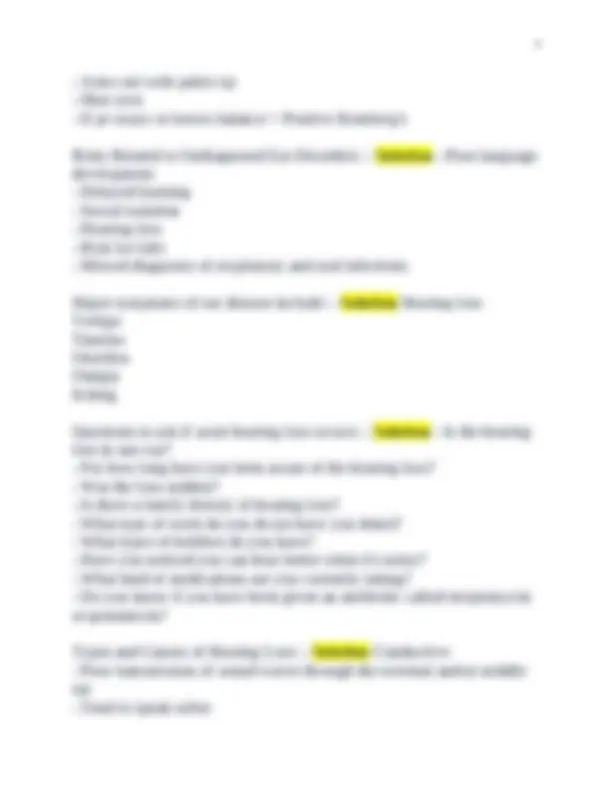
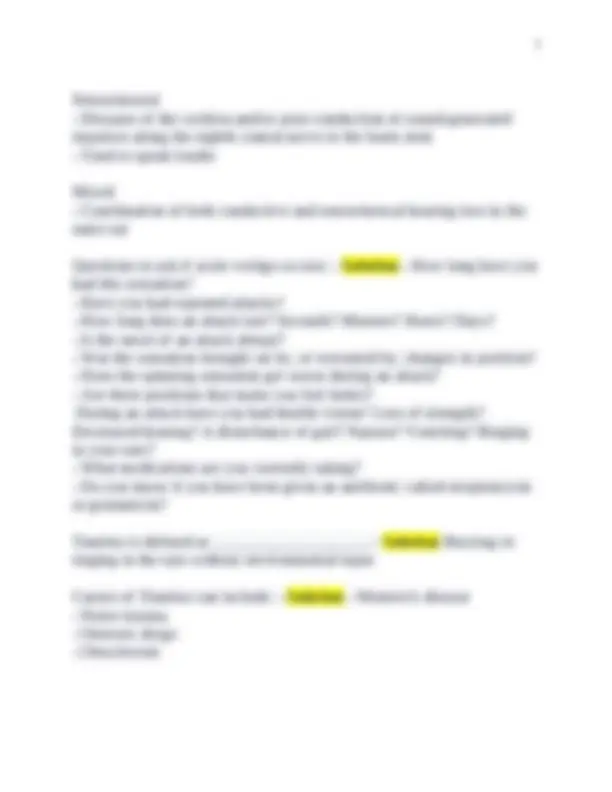
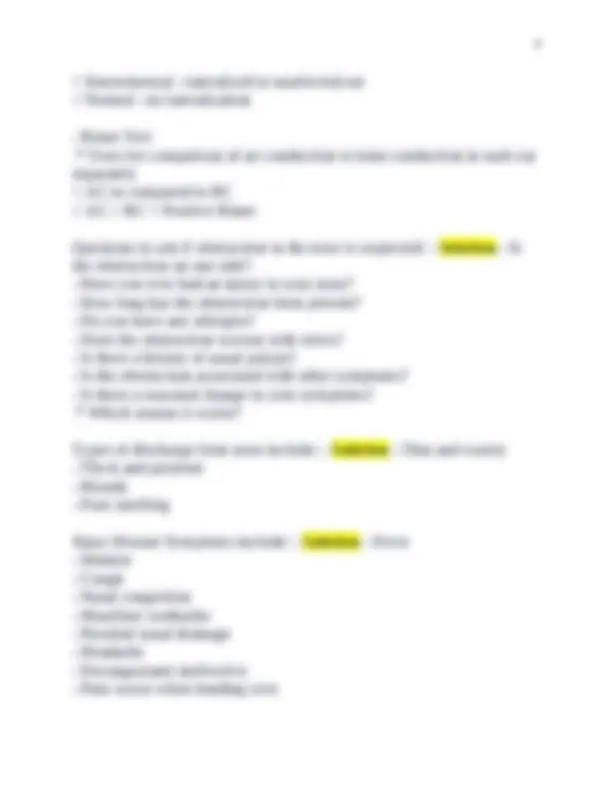
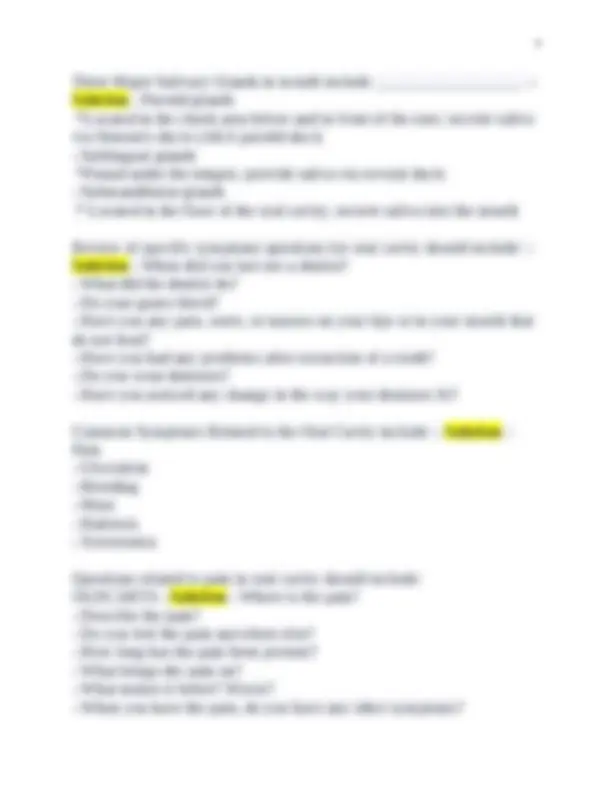
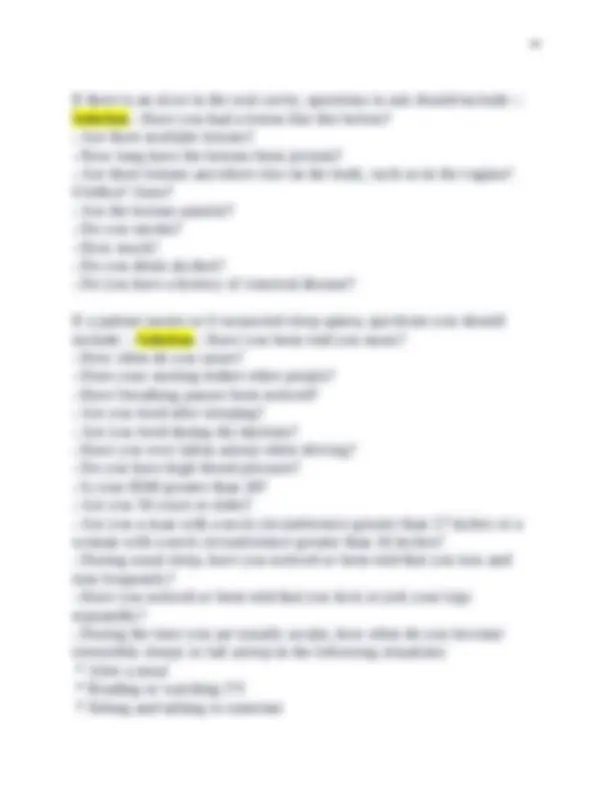
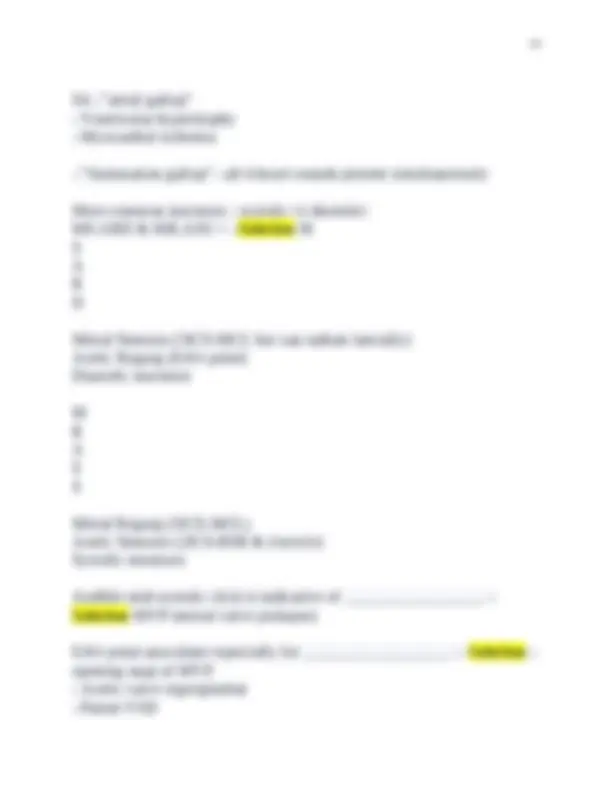
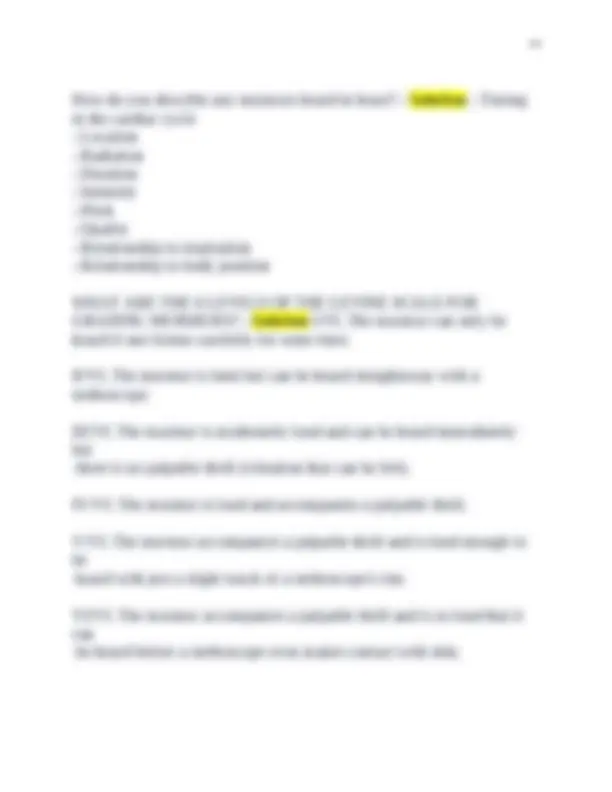
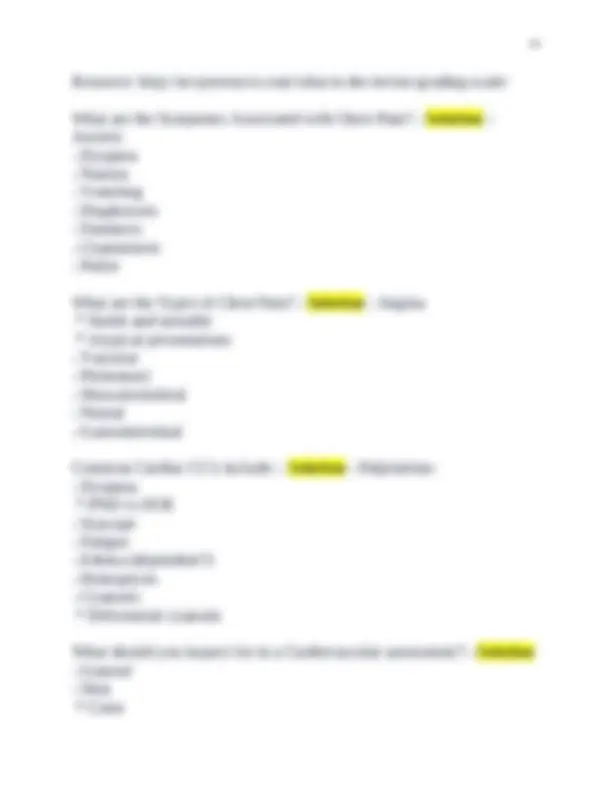
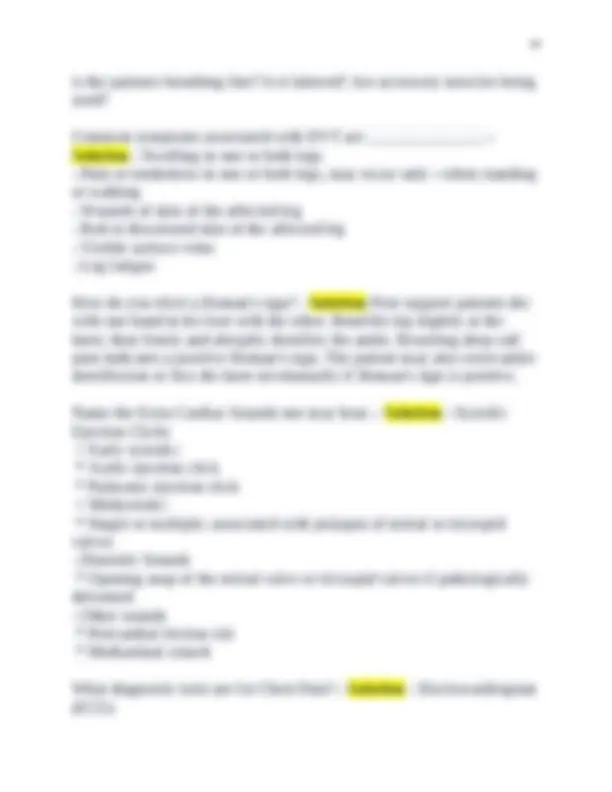
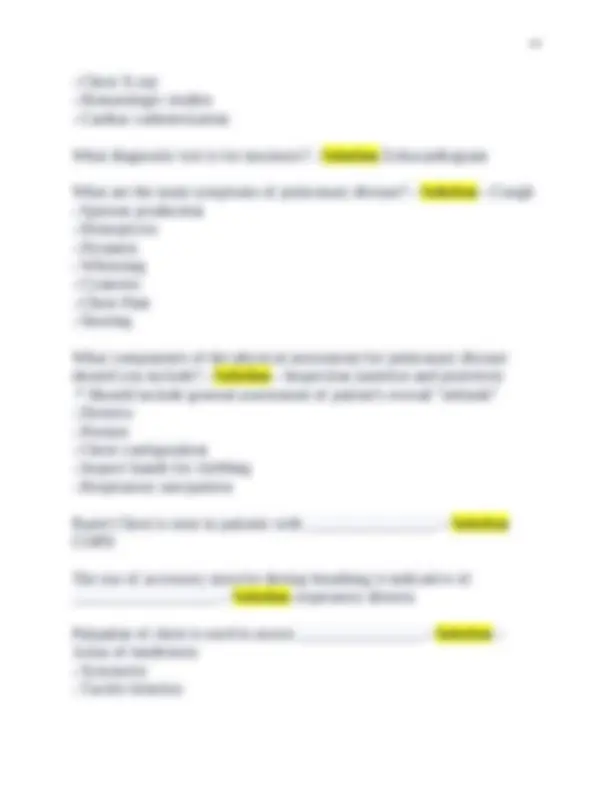
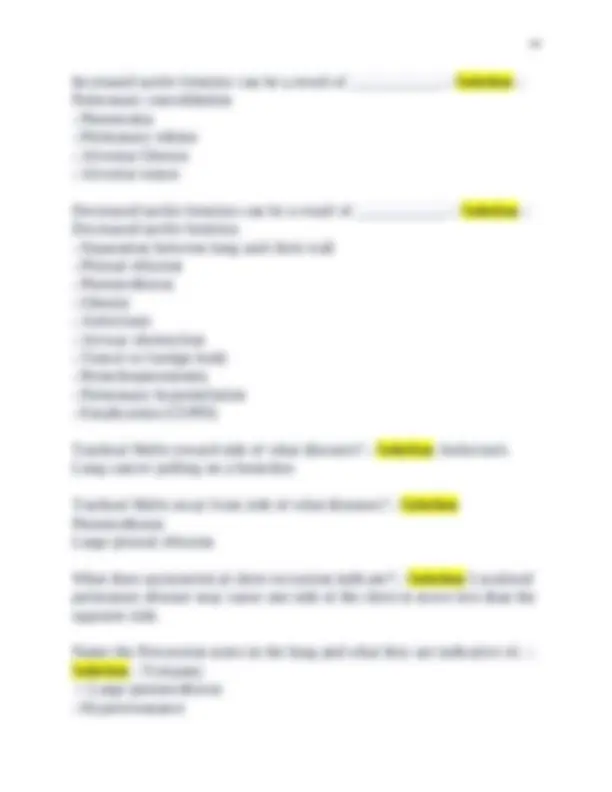
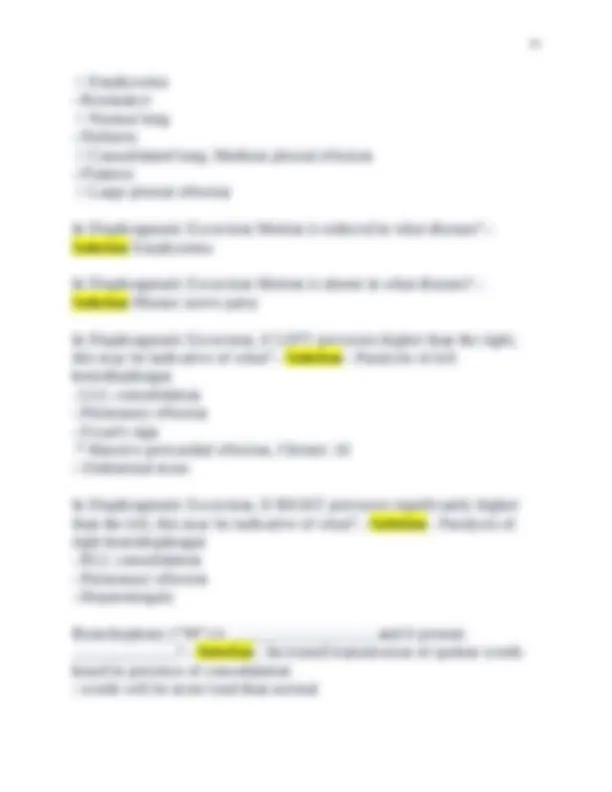
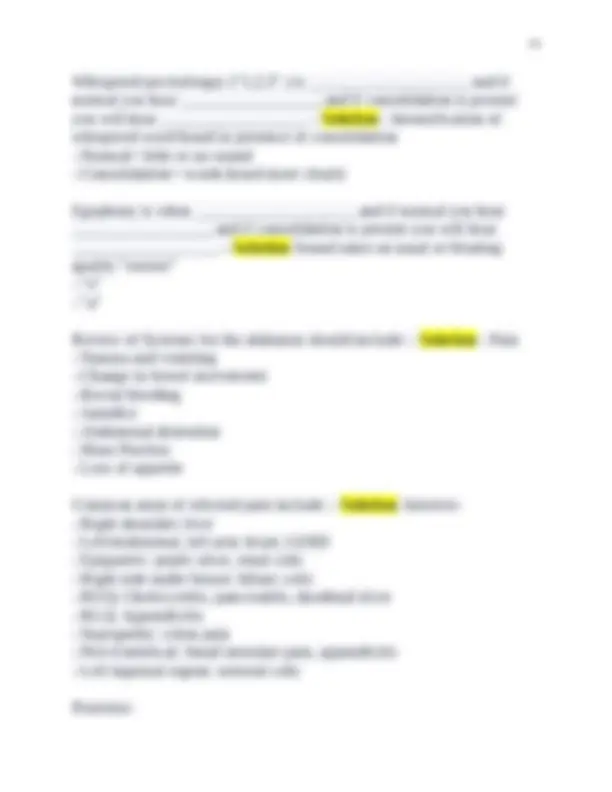
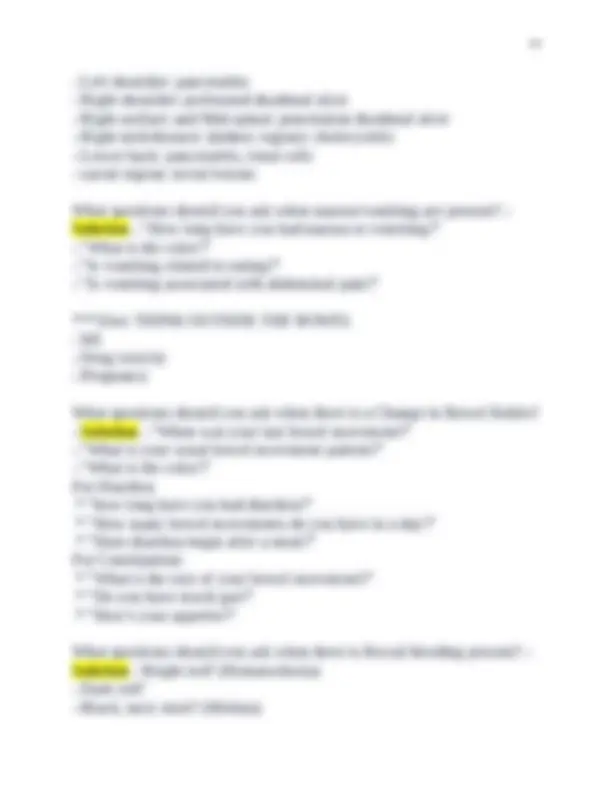
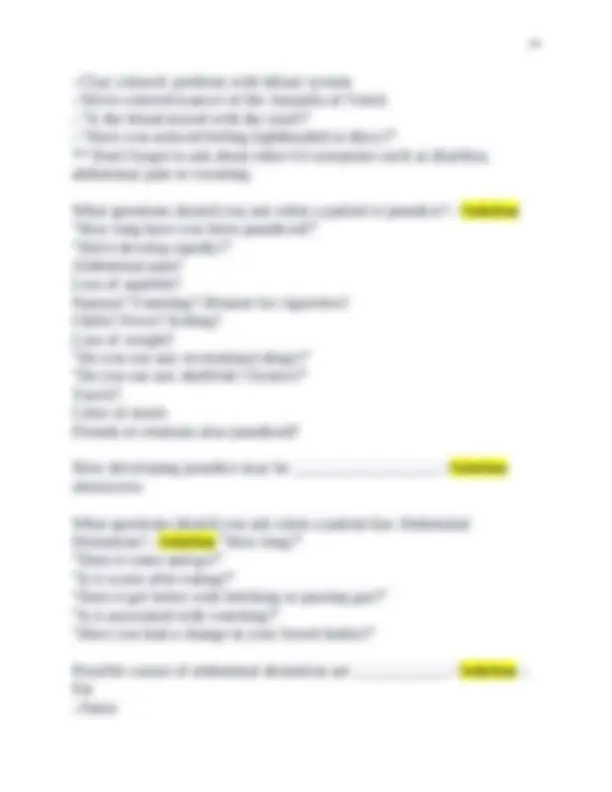
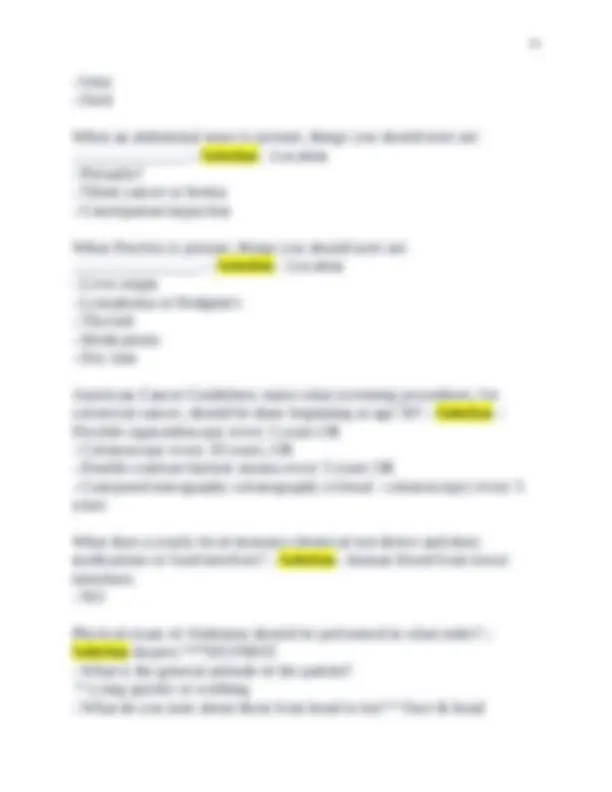
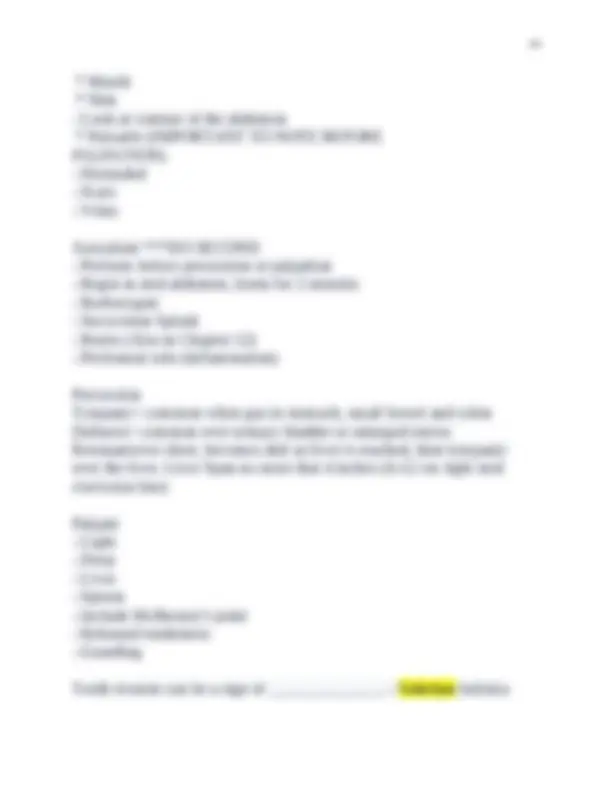
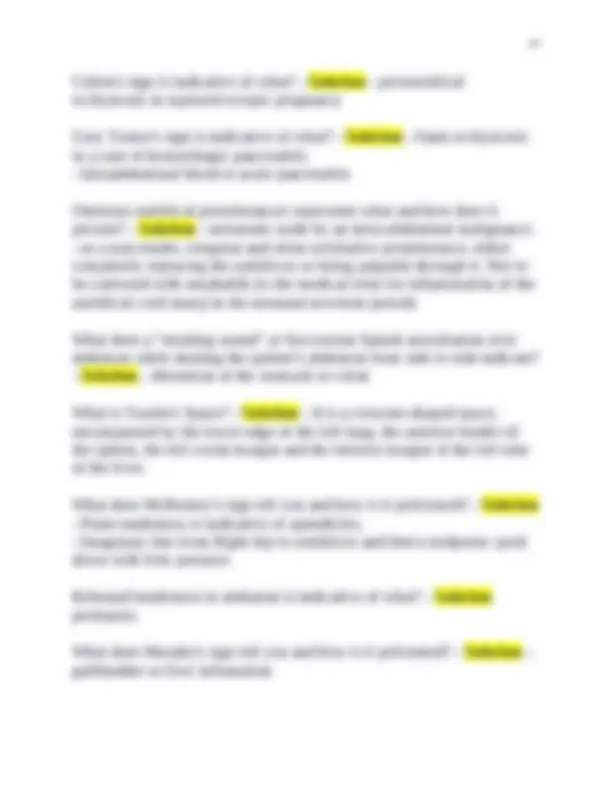
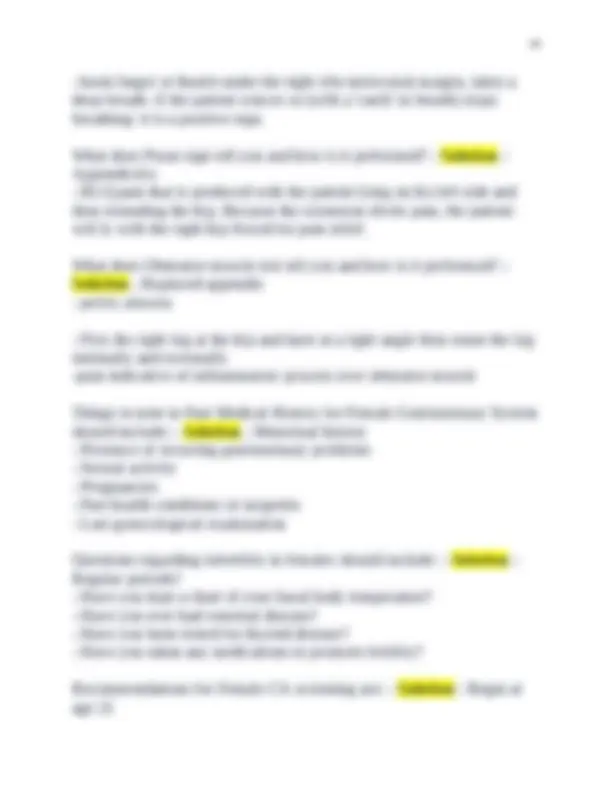
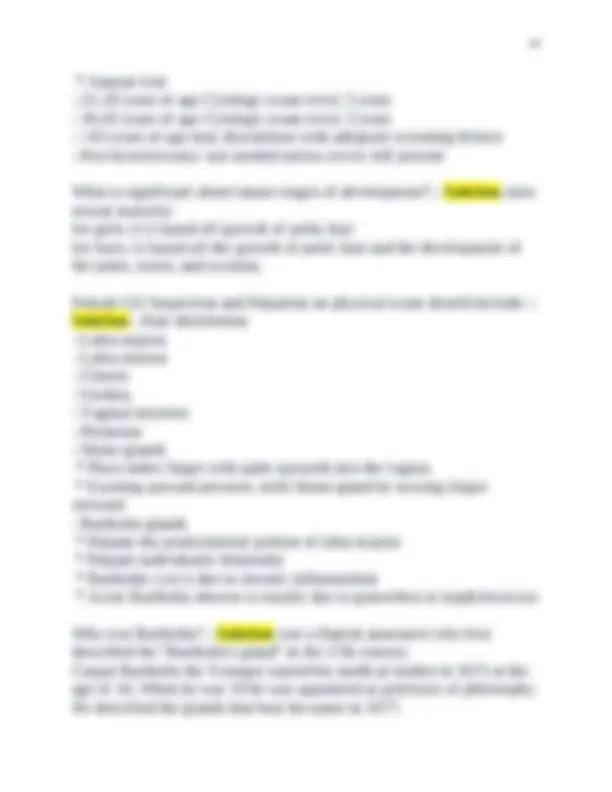
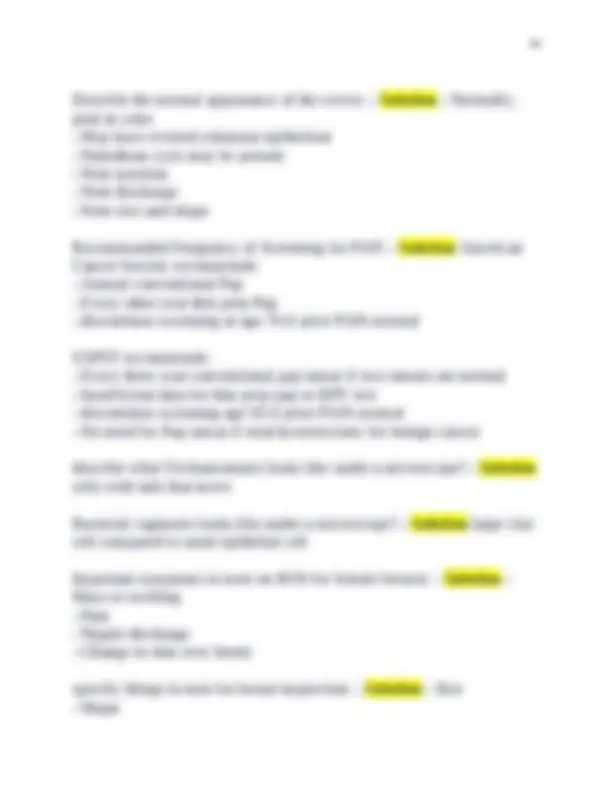
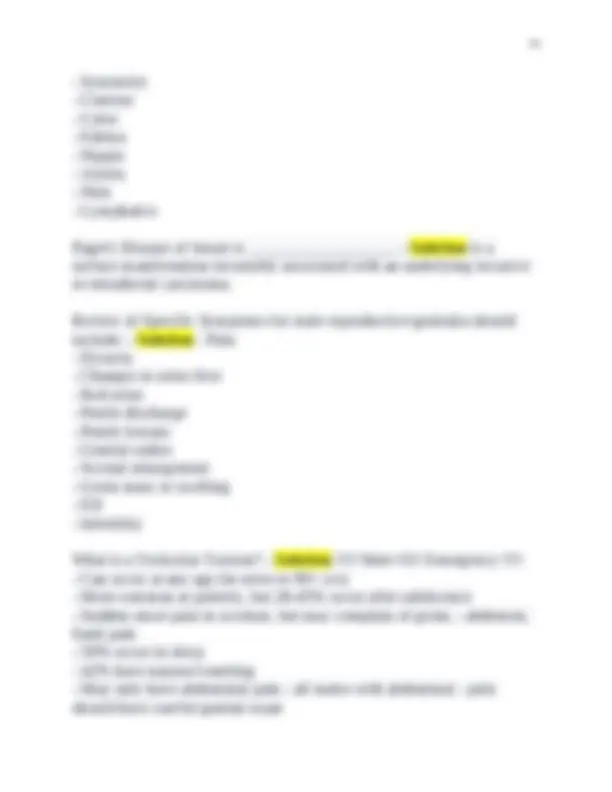
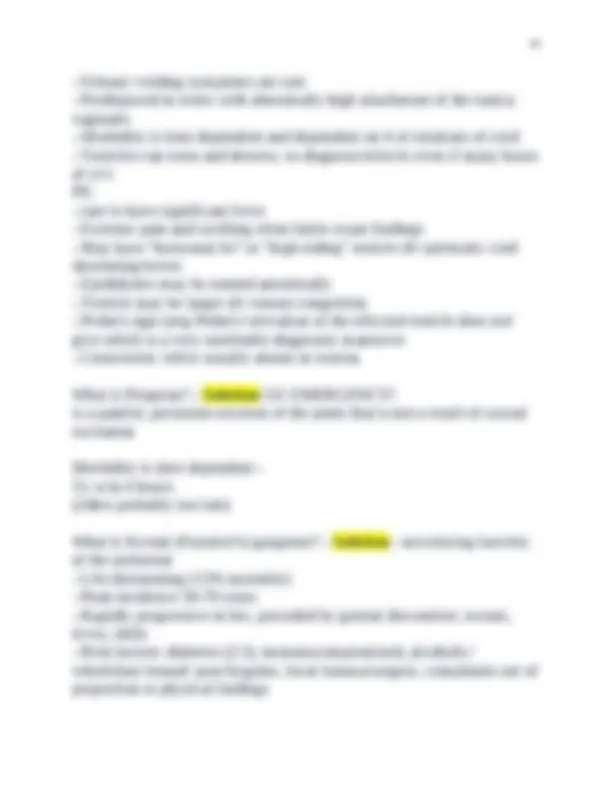
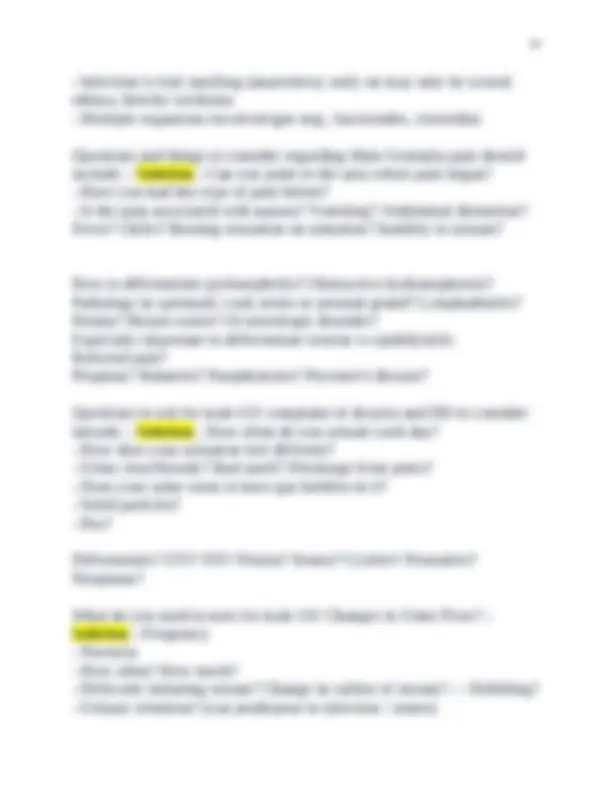
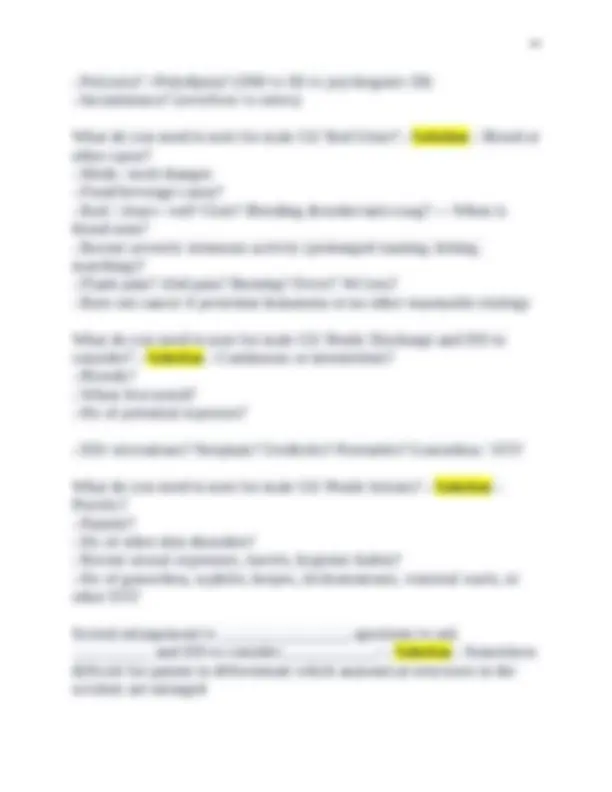
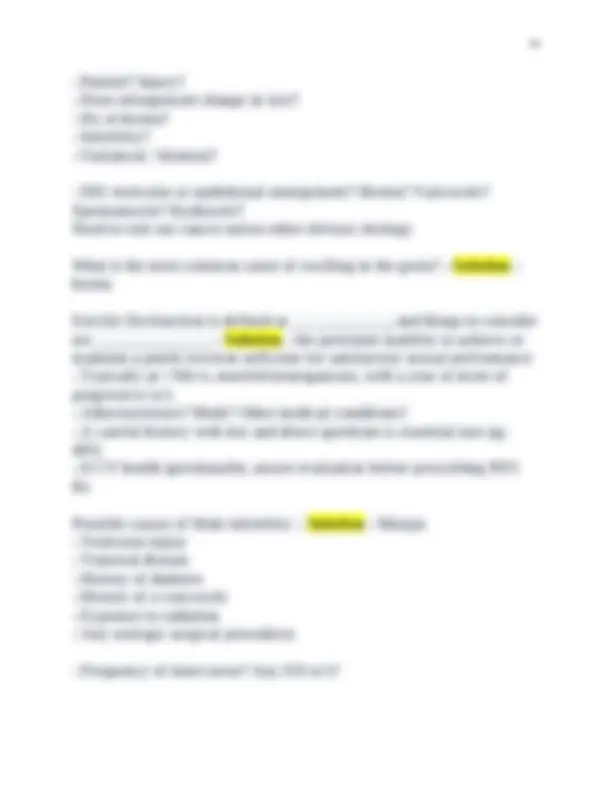
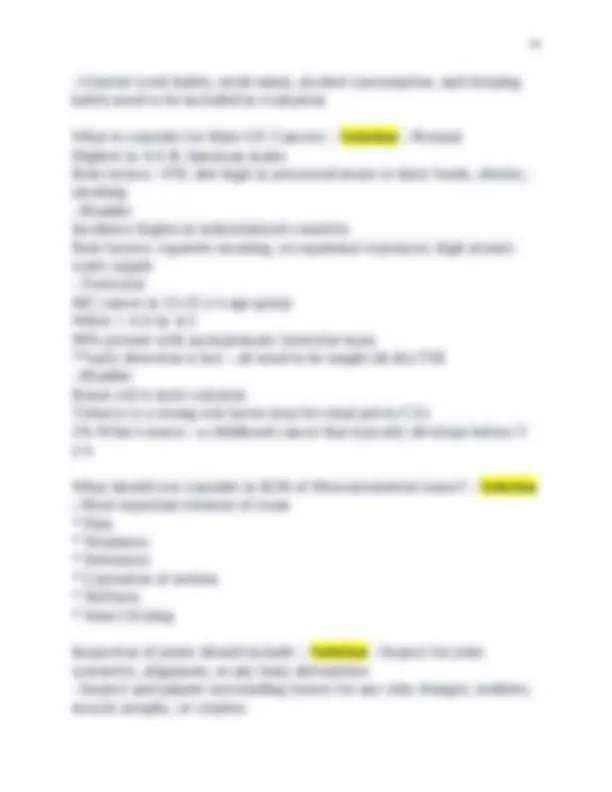
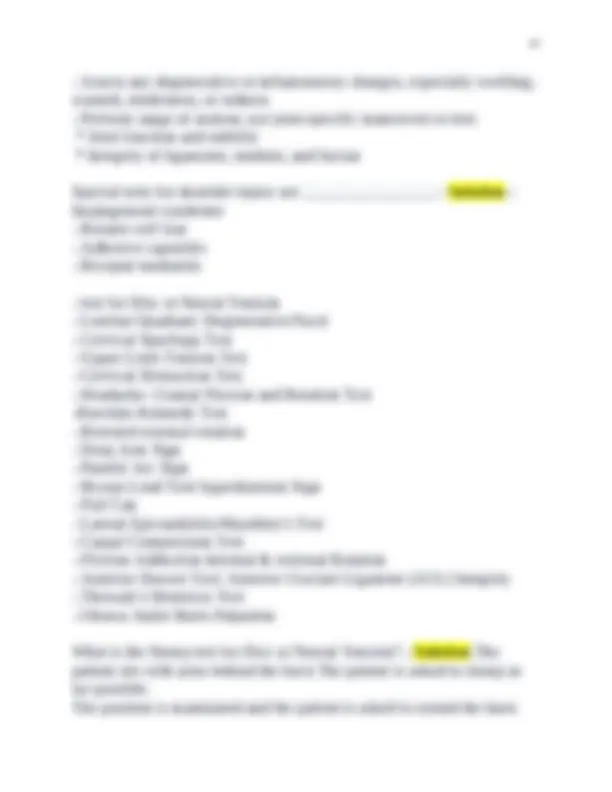
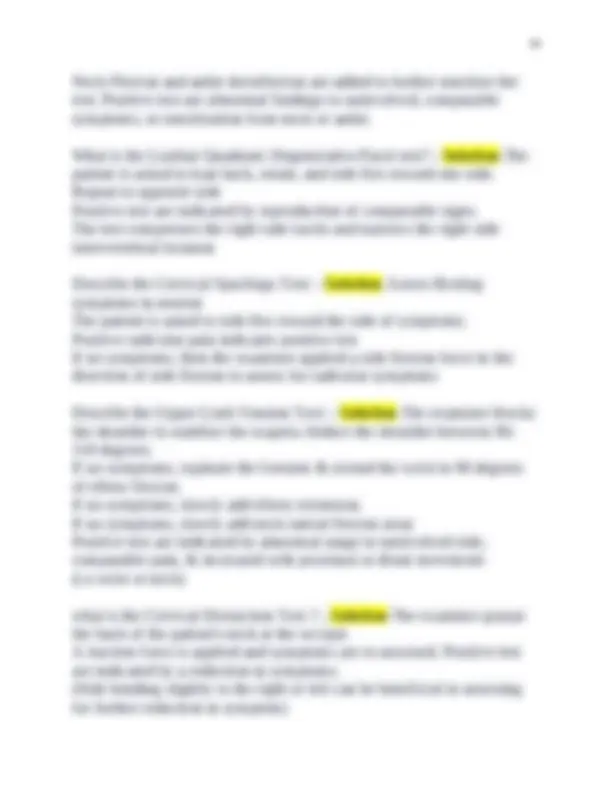

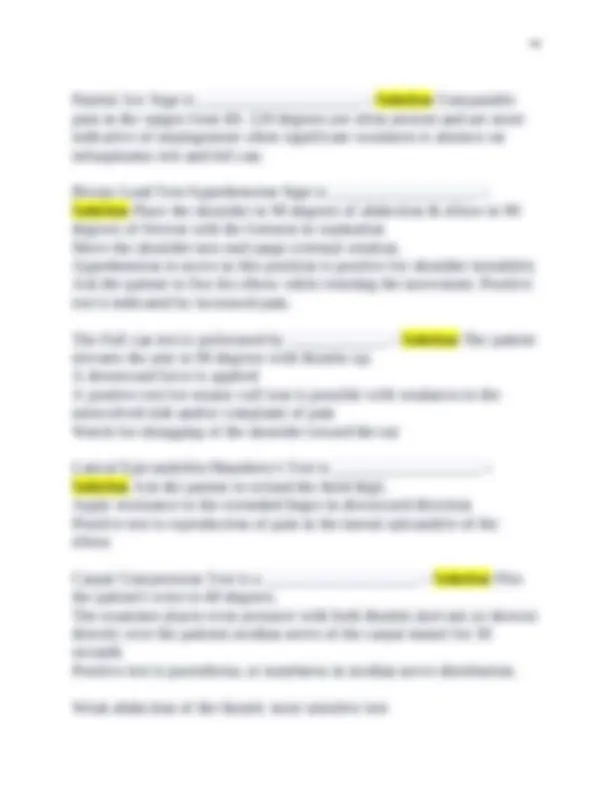
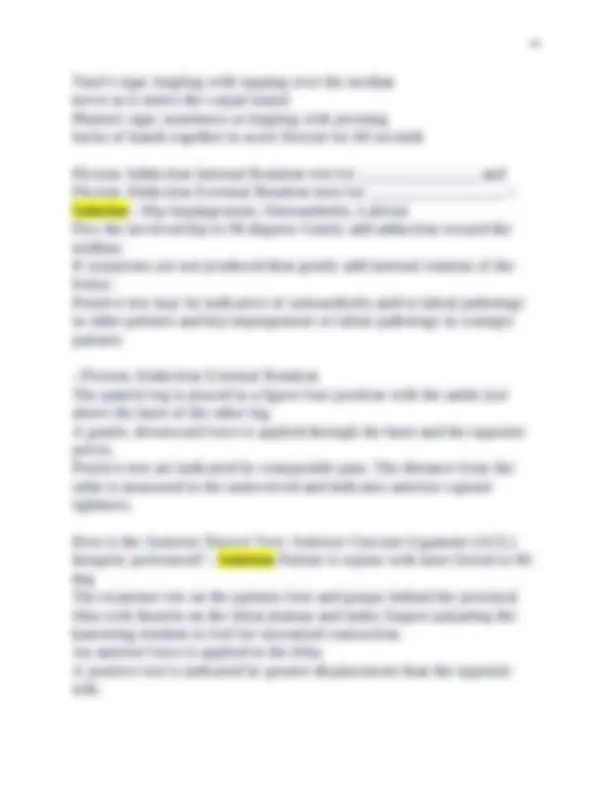
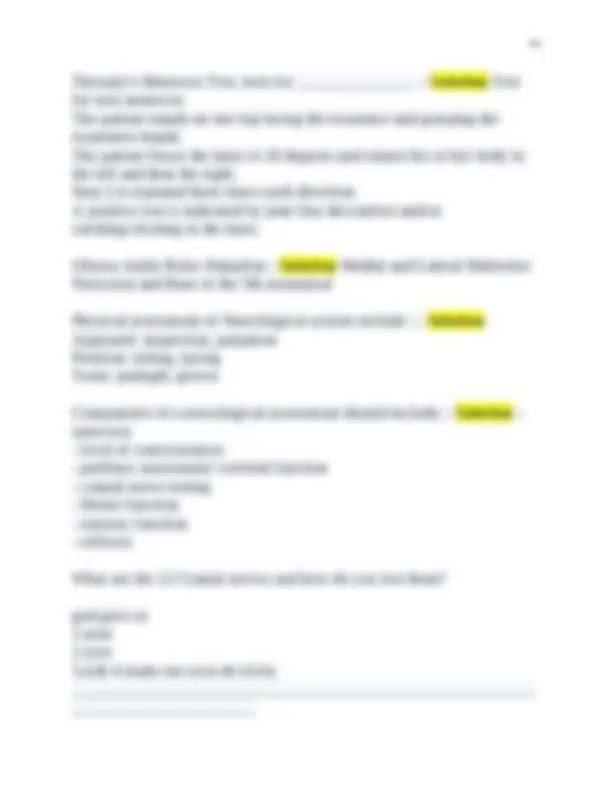
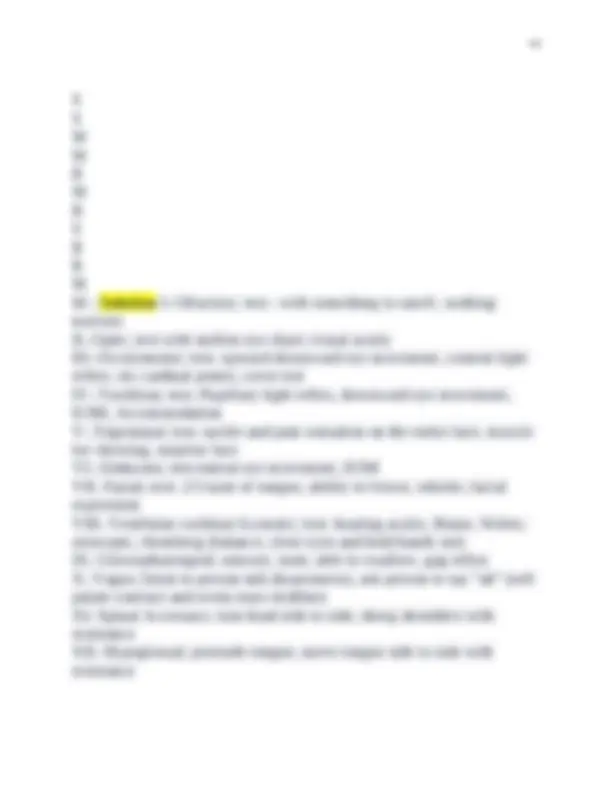
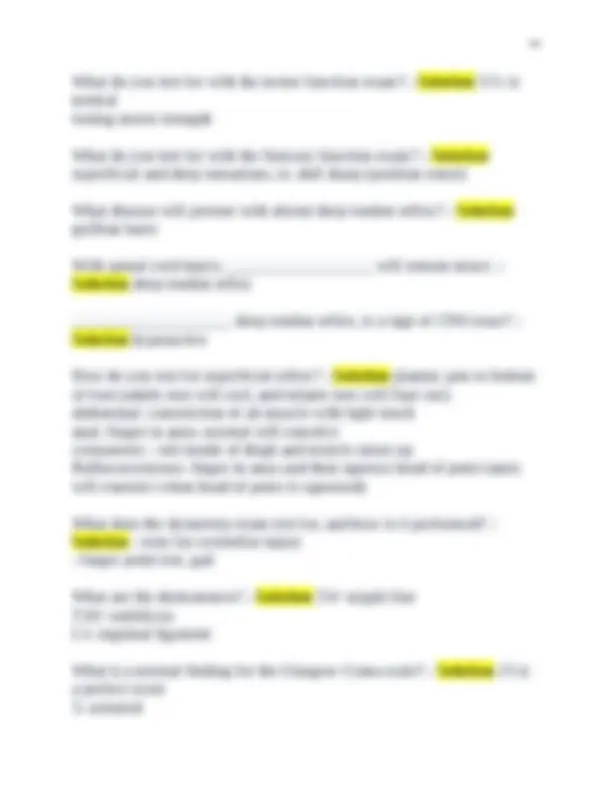
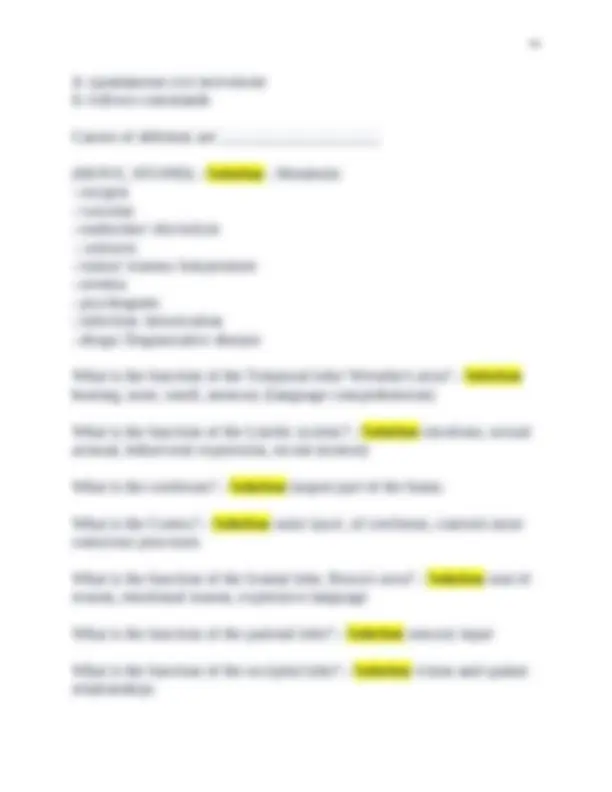
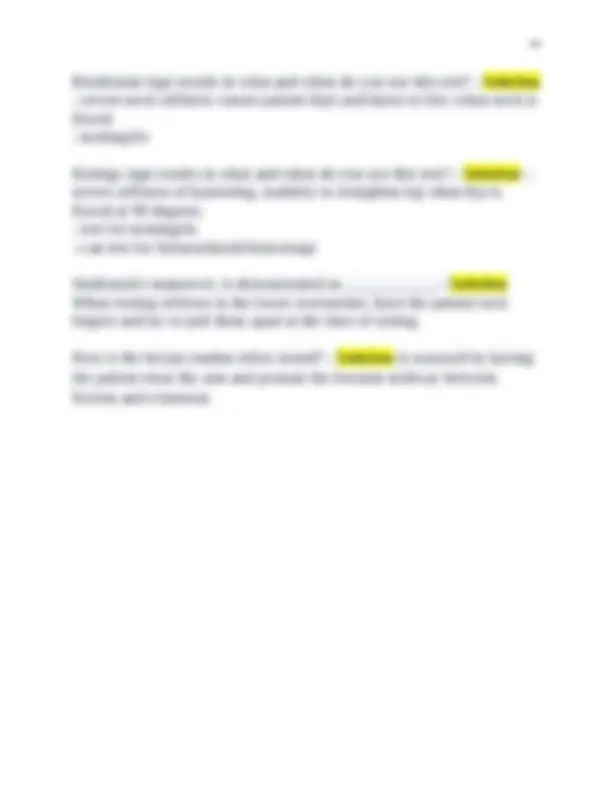


Study with the several resources on Docsity

Earn points by helping other students or get them with a premium plan


Prepare for your exams
Study with the several resources on Docsity

Earn points to download
Earn points by helping other students or get them with a premium plan
Community
Ask the community for help and clear up your study doubts
Discover the best universities in your country according to Docsity users
Free resources
Download our free guides on studying techniques, anxiety management strategies, and thesis advice from Docsity tutors
ADVANCED HEALTH TEST – FINAL EXAM ADVANCED HEALTH TEST – FINAL EXAM
Typology: Exams
1 / 46

This page cannot be seen from the preview
Don't miss anything!







































Solution A-B-C-T APPEARANCE; posture, body movements, dress, grooming and hygiene BEHAVIOR; LOC, Facial expression, speech, mood and affect COGNITION; address, phone#, etc. date?, attention span, recent and remote memory, new learning THOUGHT PROCESS; perceptions, should be logical and consistent this person make sense? how do people treat you?, do you feel you are being watched, followed or controlled? have you heard your name when alone? ___________________ screens for Anxiety - Solution GAD- 7 questions to ask for depression or suicidal ideations: - Solution Depression: Over the past two weeks, have you fell down, depressed or hopeless? Over the past 2 weeks, have you felt little interest or pleasure in doing things? Suicidal: Have you ever felt so blue you thought of hurting yourself? Do you have a plan to hurt yourself? How would you do it? Must not ignore any talk of suicide When is a full mental status exam necessary? - Solution * Patients whose initial screening suggests an anxiety disorder or depression
Sensorineural
Conductive loss - Lateralized to affected hear
Sensorineural - lateralized to unaffected ear Normal - no lateralization
AC in compared to BC AC > BC = Positive Rinne Questions to ask if obstruction in the nose is suspected: - Solution - Is the obstruction on one side?
If there is an ulcer in the oral cavity, questions to ask should include: - Solution - Have you had a lesion like this before?
S4 - "atrial gallop"
How do you describe any murmurs heard in heart? - Solution - Timing in the cardiac cycle
Earlobe crease; is an oblique crease, often bilateral, seen frequently in patients older than 50 yrs with significant CHD Arcus senilis, if found in patients younger than 40 years old may be due to - Solution -hypercholesterolemia What does Arcus senilis look like? - Solution a whitish ring at the perimeter of the cornea. Xanthelasma is __________ and is due to possible _______________. - Solution - the presence of yellowish plaques on the eyelids.
Increased tactile fremitus can be a result of ___________. - Solution - Pulmonary consolidation
Large pneumothorax